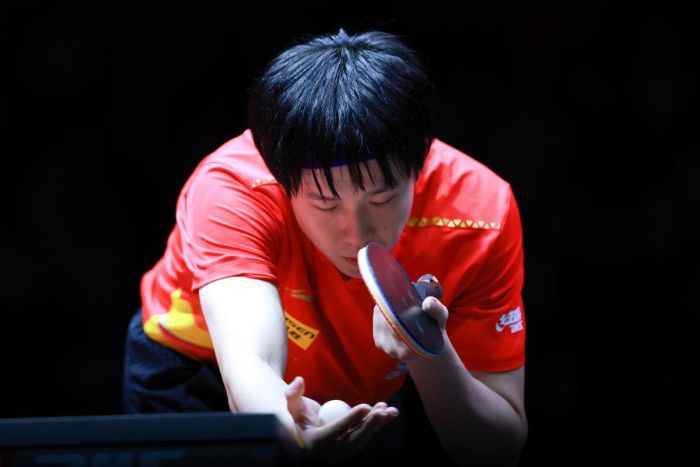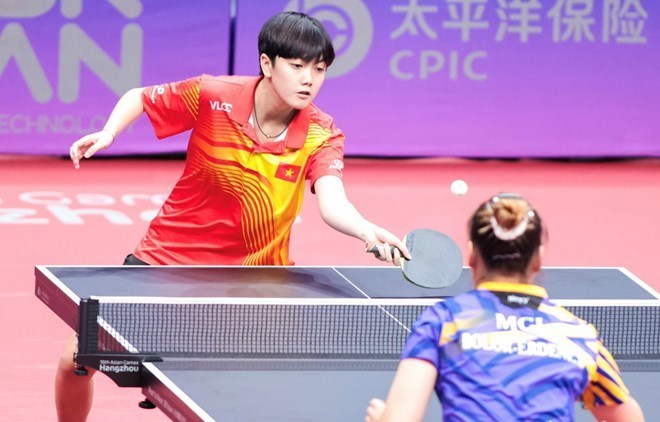Recently, at the world table tennis tournament held in Qatar, a rare incident occurred. Accordingly, before the 1/16 men's and women's doubles match between Wang Chuqin - Sun Yingsha (China) and Hugo Calderano - Bruna Takahashi (Brazil), tennis player Wang Chuqin discovered that his racket face sticker had peeled off half.
He and the coach complained, saying the referees were not careful and damaged the racket. After being traded and winning, Wang Chuqin still affirmed that his racket was not at fault before taking it to the referees for inspection.
The Chinese table tennis star was dissatisfied and reminded referees to carefully protect the players' rackets before, during and after the test before each match.
This incident not only affects the athletes' competitive mentality but also raises questions about the referee's skills and racket testing process.

Regarding this issue, in an interview with Lao Dong, Mr. Phan Anh Tuan - General Secretary of the Vietnam Table Tennis Federation said that at international tournaments such as the Asian Championship, World Championship or Olympics, the organizing committee always arranges a team to inspect the specialized racket.
"This inspection team has full equipment such as gauge meters, racket thickness measuring devices, alcohol concentration measuring devices, length, width, and thickness measuring devices. In particular, the racket surface will be checked to detect errors such as tears, breakage, and thorn not in accordance with regulations.
However, for some tournaments that do not require strict requirements, referee teams often use specialized measurement sets for manual testing. These measurements include measurements of the racket surface, racket pieces and nets," Mr. Phan Anh Tuan provided information.
Regarding actual contact in Vietnam, the General Secretary of the Vietnam Table Tennis Federation said that Vietnam used to have measuring devices, but because this device is no longer suitable, currently, referees mainly use gauge to check the racket surface, measure the thickness, height, and excess weight of the hood and racket.
"According to current regulations, each table will be equipped with a set of gauge provided by the professional equipment department. The match referee will directly conduct the inspection. In international tournaments, referees are even required to have a separate set of gauge including two types: a heavy iron gauge and a light plastic gauge.
When the racket detected signs of unsatisfactory, the referee will report the total arbitration. If the error is determined by unintentional, the athletes will be allowed to replace the racket. However, in case of intentional violations such as peeling the racket in front of the arbitrator, the athletes will be handled at the fine card levels; Except for 1 point at the first time, except for 2 points at the second time and the heaviest is to disqualify, "Mr. Tuan explained.

According to this leader, there has been no incident in Vietnam where an referee damaged an athlete's racket during the inspection.
Meanwhile, there are also many cases where rackets are not eligible to compete because they do not meet international standards. Referees can propose rackets if they do not ensure professional factors.
Mr. Tuan emphasized: "I used to be an international referee, so I understand that the inspection always has a specialized department and appropriate equipment to avoid unnecessary errors. We always recommend that athletes prepare at least two rackets when competing to prevent incidents, and be ready to have a backup plan."
With careful preparation and clear procedures, table tennis tournaments in Vietnam are striving to ensure professionalism, minimizing technical incidents affecting competition quality and the rights of athletes.











